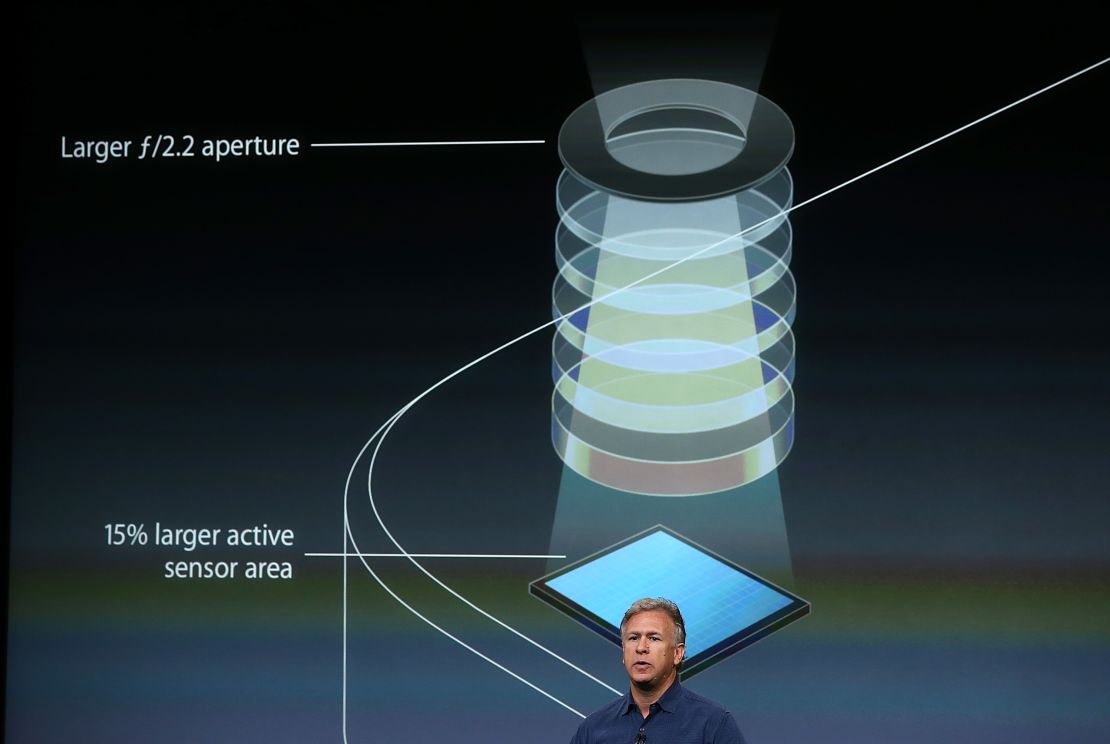Story highlights
The new iPhone 5S has a much-improved camera
The camera has a larger light sensor and a Burst Mode feature for action shots
It also shoots slow-motion video
It's not the first phone to have these features, and others may be better
Very soon, you will be sick of slow-motion videos. They will fill up your Facebook, Instagram and Vine feeds. The amateur clips will show pets jumping and playing, objects falling and breaking, and people dancing about in glorious, high-quality slow motion.
You can blame the iPhone.
Slow-motion video is the most addictive feature of the new iPhone 5S (turns out fingerprint scans are useful but not really “fun”). The camera can shoot 120 frames per second (regular video is typically 30 frames per second) and then slow downall or part of the video to show details that would usually have sped right by.
This technique is so cool that the Discovery Channel had a whole series devoted to it. “Time Warp” employed extremely high-speed cameras and then slowed the footage way down to examine principles of physics. Apparently, it’s also cute for weddings.
The camera is always one of the primary reasons people choose to upgrade to a new iPhone, right up there with overall speed. With each generation of phone, Apple has made incremental upgrades to the camera’s hardware and software, such as the ability to shoot video, to use a flash or to snap panoramic images.

Here’s a closer look at the key features of the iPhone 5S camera:
Low-light performance
For the iPhone 5S, Apple improved overall image quality by expanding by 15% the amount of sensor space the camera uses to capture pictures. Apple kept the camera at 8 megapixels but made the existing pixels larger, resulting in better low-light performance.
Shooting photos in low-light settings is an area where all smartphones can use a little improvement. Nighttime photos are often grainy or murky because of slow shutter speeds, small sensors and shoddy flashes.
The 5S has noticeably improved its low-light performance with the larger pixels and by adding auto-image stabilization, which corrects for shaky hands. It also replaces the iPhone 5’s old single flash with a new two-light system called True-Tone Flash.
Instead of washing out a scene with a single flood of light, the new system takes a pre-flash to decide what the color temperature should be and then chooses the appropriate settings for cool and warm light. There are 1,000 potential lighting combinations, and while it’s still a far cry from a professional flash, it’s a big improvement.
Burst Mode
Just as every camera is a little better, every iPhone is a little faster. This round, there’s a powerful A7 chip inside. The camera feels faster as a result, especially when you switch over to a new feature called Burst Mode. Pressing and holding the shutter button now takes a rapid series of shots – 10 frames per second, up to 999 total images.
If you’re taking a photo of a fast-moving subject or want to be sure you don’t miss a fleeting moment, Burst Mode covers all the bases. It even helps you pick the best shots from the bunch by looking for things such as sharpness, smiles and whether a subject’s eyes are open.
There’s a bit of an adjustment period with this new feature. On the old iPhones, you would hold down the shutter button until you were ready to capture an image, then lift your finger to capture it. Now you can accidentally end up with 45 photos of a sunset.
Other features

The new camera also contains a handful of smaller improvements, including a feature that crops images into squares and adds filters, à la Instagram. In a final touch, the panorama feature – available since the iPhone 5 – can now subtly change the exposure as you pan across a scene.
Slow motion is still the most fun new feature, but it’s also the most frustrating when it comes to sharing. The files are large, so there are a few hurdles you must jump to upload the clips directly to Instagram or some other platforms. For example, you first must run the image through one of the phone’s share-screen options, which include Facebook, YouTube, Vimeo and Mail.
The phone-camera battle
The iPhone 5S is not the first smartphone to get these features. In fact, Samsung’s Galaxy S4 has slow motion, a mode for shooting action and many other camera extras not included on the iPhone, including the ability to speed up video clips and make animated GIFs. Owners of the iPhone 5S can add some of these missing features through third-party apps, however.
The iPhone 5S does not even have the most powerful camera hardware. That honor goes to the Nokia Lumia 1020, which packs a much-hyped, powerful 41-megapixel camera, great for zooming in on images taken from a distance.
What Apple does have is a great alternative to a point-and-shoot in a popular operating system on coveted hardware.
At this point, it’s pretty much a given that smartphones have severely wounded the market for point-and-shoot cameras.In the first half of 2013, point-and-shoot sales shipments were down 42% from the same period last year, according to the Camera and Imaging Products Association. That tumble follows years of declining camera sales as smartphone manufacturers compete against each other for the best new camera features.
For the average consumer, the real camera battle will continue to be between smartphone manufacturers as they struggle to improve a feature that’s limited by space and technology.
And Apple will continue making small camera improvements. Maybe the iPhone 6 will include a Frontback option. But for now, the slow-motion feature wins this round of iPhone upgrades.













